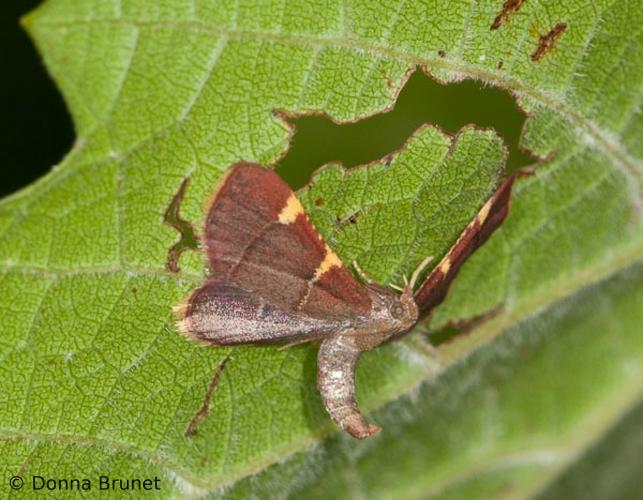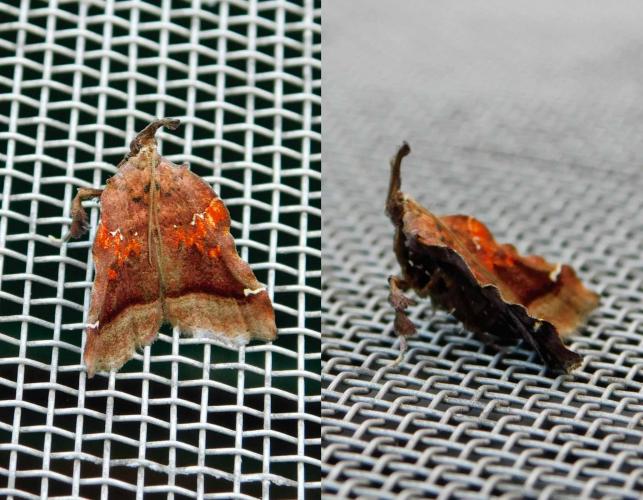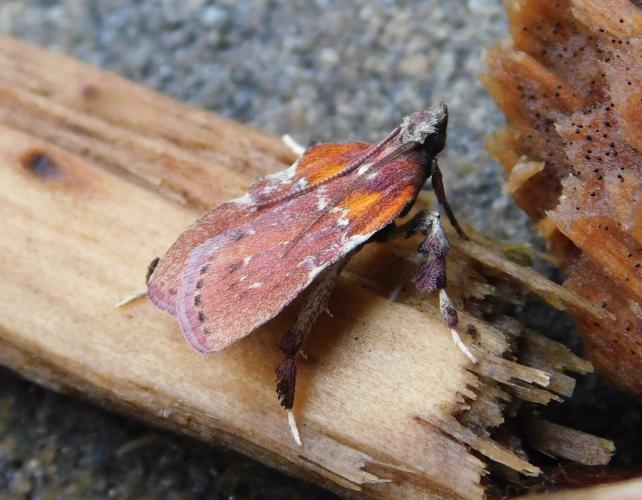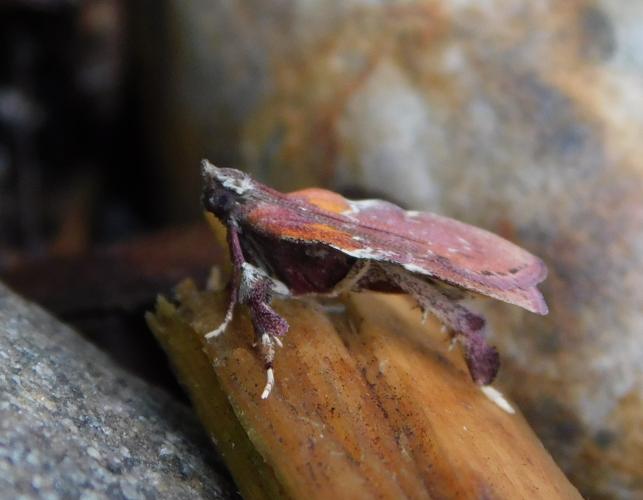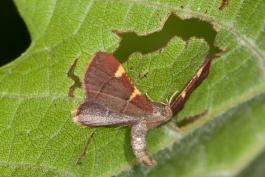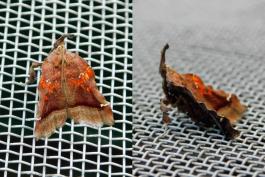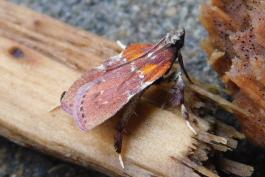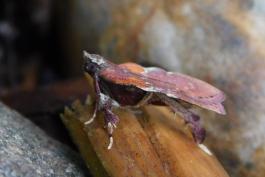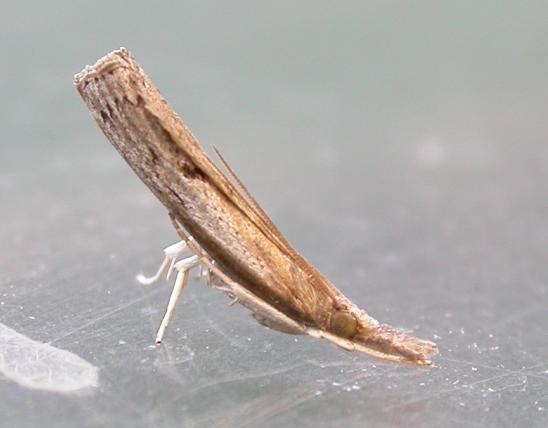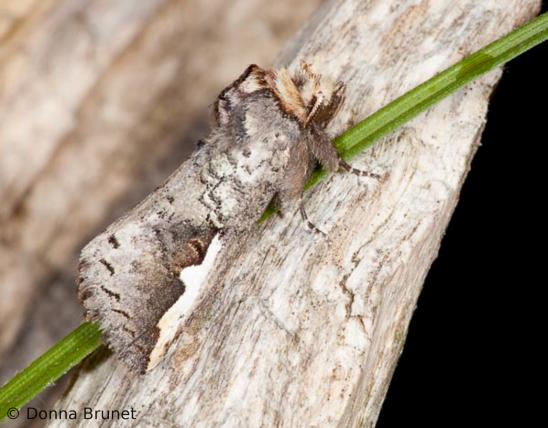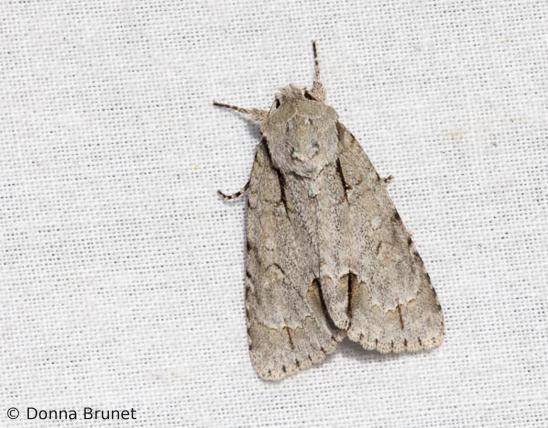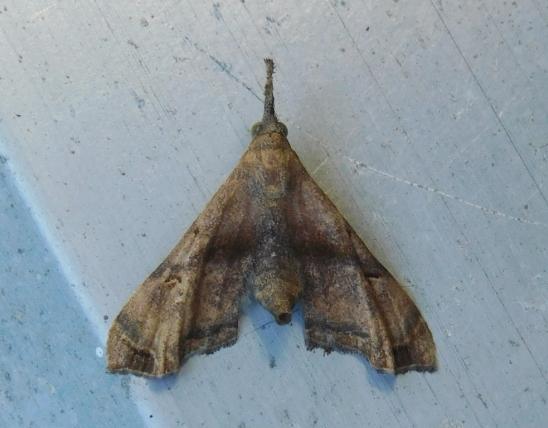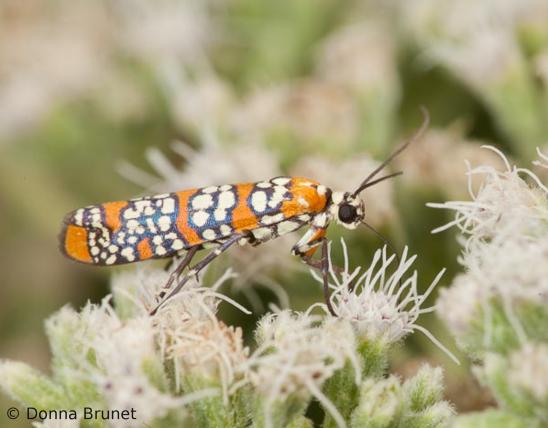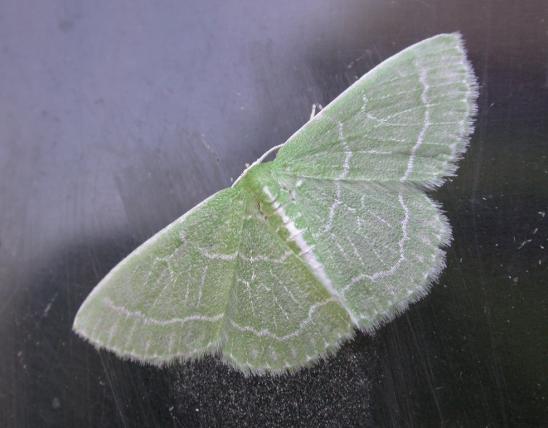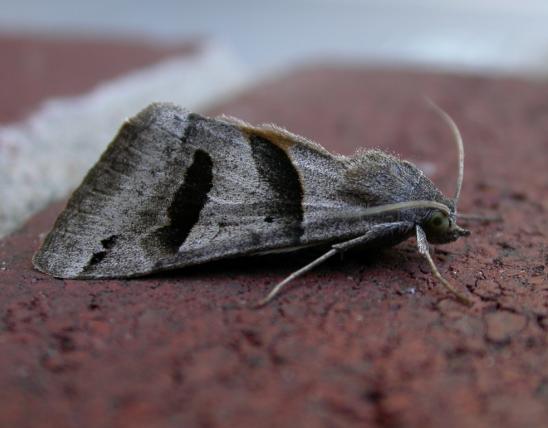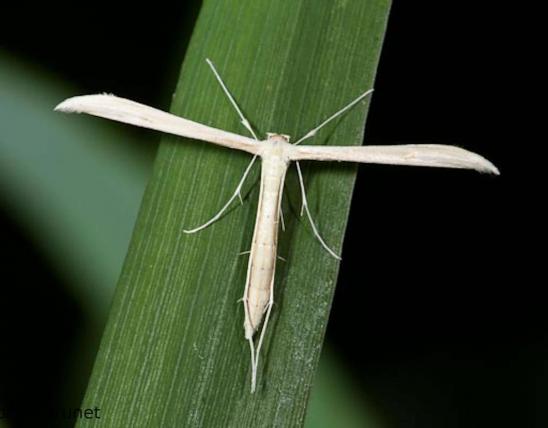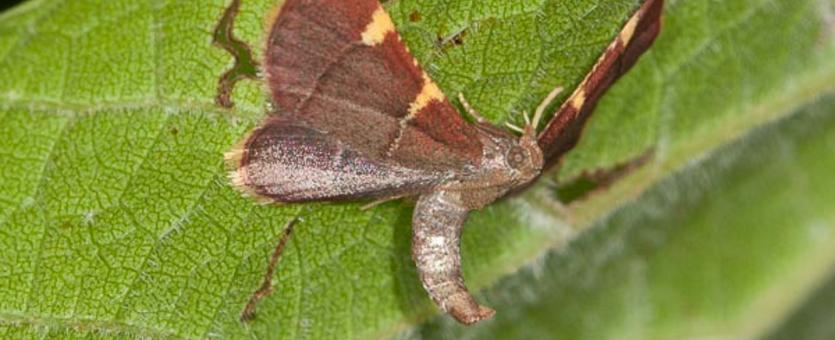
The pyralids are a large and diverse family of mostly small or medium-sized moths, including various types of webworms, leaf tiers, wax moths, leaf folders, leaf rollers, and more. The pyralid family used to be even larger before the crambid snout moths (Crambidae) — another large group — were split away in their own family. Unfortunately, the two families can be very hard to tell apart by amateurs. If you can’t tell whether a moth is a pyralid or a crambid, you can sidestep the issue and say the moth is in superfamily Pyraloidea (the huge group that now includes both families).
Adult pyralids hold their wings flat out to the side (looking triangular from above), or fold them flat down their back, or roll them around their abdomens (so that they look like a piece of a twig). Some (usually males), when resting, curl the abdomen up into the air. Most have camouflage mottled, wavy, or banded patterns and coloration of tans, browns, and grays. Rusts, ochers, pinks, yellows, and silvery beige are also common.
Larvae vary greatly but usually lack dense hairs or spines. Few are brightly colored; most are green or brown. They usually are not seen in the open, and this is an identification clue: Most pyralid caterpillars are sheltered as they feed, boring into stems, fruits, seeds of plants; rolling or tying leaves with silk to create protective tubes or tents; or living in the soil. Some species live in the nests of bees or wasps, and some eat the stored grain of humans.
Wingspan: about ½ to 1½ inches; varies with species.
Statewide.
Habitat and Conservation
See description (above) for the habits of pyralid caterpillars, which tells you where they may be found. Although many species are generalists, eating a variety of host plants, others are more limited to certain types or families of plants — so look for those species in habitats that support those plants.
As with many other moths, adults are commonly attracted to lights at night.
Food
As mentioned in the description (above), the larvae of this diverse group eat various parts of plants as well as other materials, such as wax from beehives or stored grain. Because they usually bore into plant tissues, or build shelters out of leaves, they are usually concealed from plain sight. One species, for example, eats pawpaw fruits. Some species are major crop pests. Some eat stored grain or grain products (such as flour). Wax moths (Achroia and Galleria spp.) and bee moths (Aphomia spp.) eat wax or other materials from beehives.
Life Cycle
Like other moths, pyralids begin life as an egg, then hatch into a caterpillar and grow through a number of molts until, when they reach full size, they pupate and emerge as a winged, sexually mature adult.
Human Connections
The greater wax moth (Galleria mellonella) was introduced from the Old World long ago. Its larvae eat the wax in beehives as well as dried fruits, pollen, and shed larval bee “skins” and other detritus in beehives. In this respect, it’s a pest. But its caterpillars are also quite useful in biological experiments, in teaching insect physiology, and as fish bait. But perhaps best, it appears that the caterpillars have bacteria in their gut that can digest polyethylene (the most common plastic), converting it into ethylene glycol (the most common chemical used as antifreeze). Ethylene glycol is toxic and sweet-tasting, making it dangerously tempting to children and pets, but it breaks down in soil and water within a few weeks, which plastic does not.
Other pest species include the Indian meal moth (Plodia interpunctella), Mediterranean flour moth (or mill moth, Ephestia kuehniella), and the meal moth (Pyralis farinalis) — all feed on a variety of stored grains, dried fruits, seeds (including birdseed), boxes of biscuit or cake mix, and so on. Many of these moths have spread worldwide. Some pyralids specialize in eating suet and other greasy materials; others of fruits, legumes, and more.
Several pyralids are used as biological control species for invasive plants.
Ecosystem Connections
Nature functions in a balance. Pyralids, like other plant eaters, limit the growth and spread of plants and then become food for their many predators. They pass the nutrients they acquired from plants along to carnivores. The fact that most pyralid caterpillars build shelters or live concealed inside their food plants is a sign that many kinds of animals — birds, for example — would love to eat them.
Some pyralids (especially coneworms, webworms, and the like), in years of major outbreaks, can defoliate stands of their host trees. Often, the following year sees an abundance of the bird species that feed on the webworms.
The presence of earlike organs suggests that these moths are preyed upon heavily by bats, which use echolocation (basically, sonar) to hunt. In response, the moths have developed a way of detecting their predators before being captured. In many cases, a moth’s immediate response to hearing the sonar blips of an approaching bat is to dive down into shrubs or grasses, land somewhere, and hold still. That way, a bat using echolocation cannot isolate the moth amid the jumble of plant stalks and gives up the chase.
